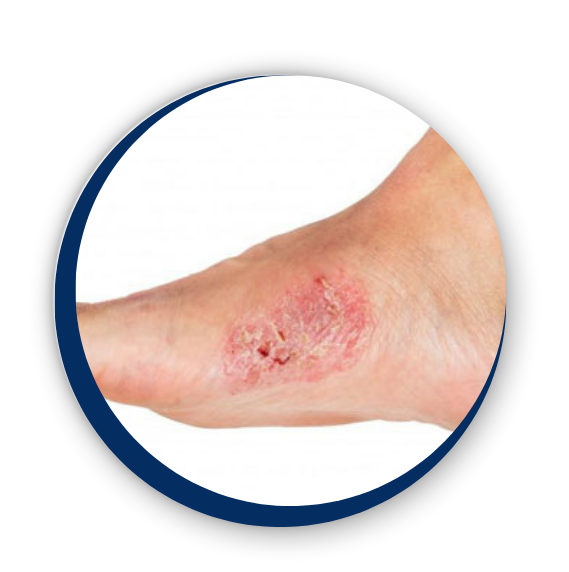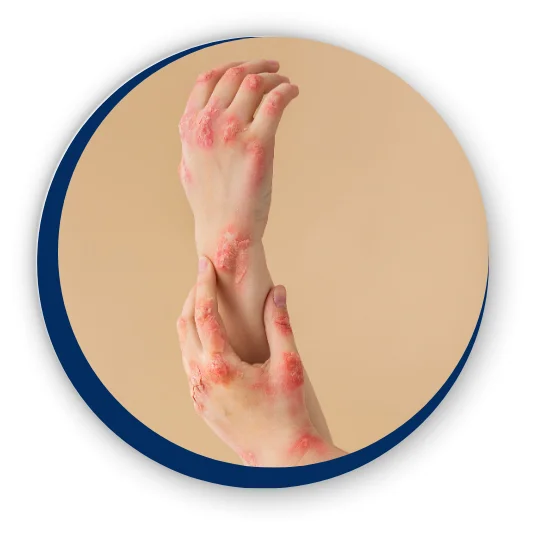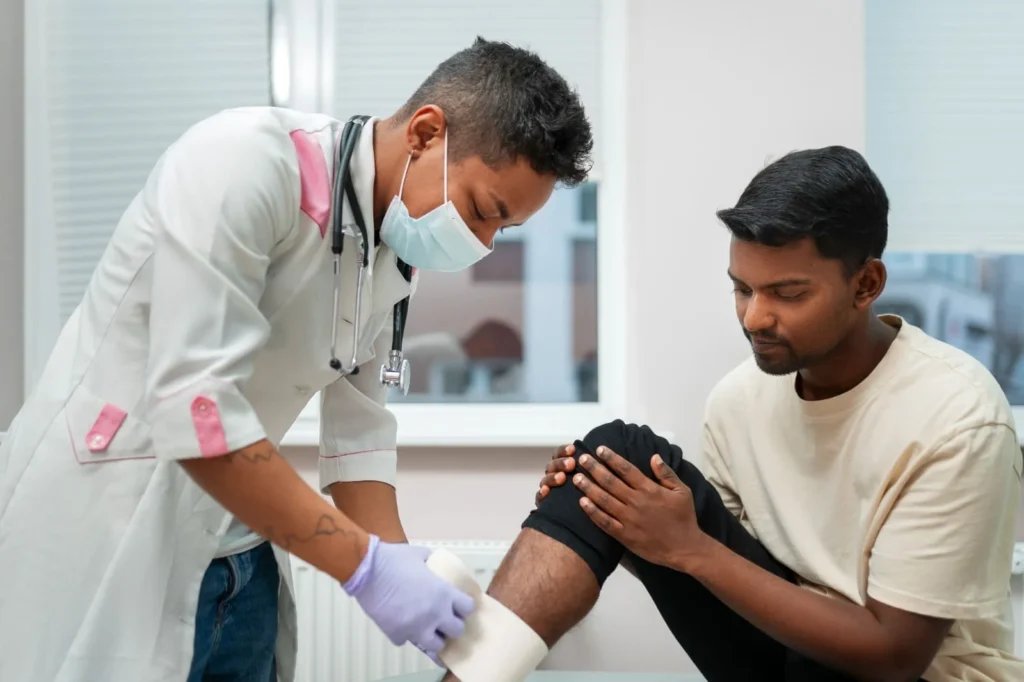Get Advanced Care for Non-Healing Wounds in Mumbai at VRX Healthcare
What Are Non-Healing Wounds?
Non-healing wounds are cuts or sores that do not heal properly, even after weeks or months of care. These are also known as chronic non-healing wounds. They usually stay open, get infected, or worsen over time. People with diabetes, poor blood circulation, or other health issues are more likely to develop non-healing wounds in Mumbai.
If you are suffering from a wound that just won’t heal, it’s time to get expert help. At VRX Healthcare, we offer advanced and personalized treatment for chronic non-healing wounds in Mumbai.
Signs You May Have a Chronic Non-Healing Wound
If you have a wound that isn’t healing even after several weeks, it might be a chronic non-healing wound. This means your body is having trouble repairing the damaged tissue. Getting the right treatment at the right time is very important to avoid serious infections and complications.
At VRX Healthcare, our expert team provides effective care for non-healing wounds in Mumbai. Here are the most common signs that you may need help from the best wound care doctors in Mumbai:
If the area around your wound continues to hurt or feels more sensitive over time, even after weeks of care, it may be a sign of a chronic non-healing wound.
Inflamed or swollen skin around the wound, along with warmth, could mean there is an infection that needs medical attention.
If your wound shows little or no improvement after 4 to 6 weeks, such as no scabbing or shrinking, it is likely a non-healing wound that needs specialized care.
Yellow, green, or bad-smelling fluid coming from the wound can be a warning sign of infection.
If the skin around the wound becomes darker or turns a bluish shade, it could mean poor blood flow or tissue damage.
Wounds with hard or thickened edges that don’t close properly are common in chronic non-healing wounds.
If the wound gets infected again and again despite proper cleaning, this is a clear sign that it’s not healing properly.
If the wound keeps bleeding or leaks a lot of fluid, it may need professional care.
Dead, black tissue (called necrosis) around the wound can stop healing and increase the risk of infection.
These could be signs of a serious infection. You should get immediate help if you experience them.
Types of Wound Dressings for Non-Healing Wounds and Diabetic Foot Ulcers
The type of wound dressing needed depends on several factors like how deep the wound is, where it’s located, how much tissue is lost, and whether the wound is infected. At VRX Healthcare, we use advanced tools and expert care to provide the best non-healing wound treatment and leg ulcer treatment in the elderly.
Our experienced medical team carefully examines the wound and classifies it into the following categories before recommending a suitable dressing:
These wounds are made in a sterile setting, usually during surgery. They don’t have bacteria and heal without complications.
These are often caused by accidents. They may contain dirt, bacteria, or other harmful materials, making proper cleaning and care essential.
These wounds show signs of infection like redness, swelling, pus, and pain. Prompt non-healing ulcer treatment is important to stop the infection from spreading.
These are long-term wounds that don’t heal easily and may have bacteria living in the wound bed. They often cause discomfort and need special wound dressings and ongoing care.
If you or a loved one is struggling with a wound that won’t heal, especially a diabetic foot ulcer, don’t delay. Contact Wound and Vein Clinic for expert diagnosis and effective treatment.


Who Is at Risk of Non-Healing Wounds?
People with diabetes, heart issues, or poor circulation are at higher risk of needing Non Healing Wound Treatment or Non Healing Ulcer Treatment.
Smoking, weak immunity, and limited mobility can also slow healing. Early care is key to avoiding complications.
Get A Quote
Book an Appointment
Advanced Treatment for Non-Healing Wounds in Mumbai

Debridement
We clean the wound by removing dead or infected tissue to allow healthy tissue to grow.

Oxygen Therapy (NATROX)
Oxygen is directly supplied to the wound to help cells repair and fight infection.

CO₂ Laser
Used for precise removal of dead tissue with less damage to healthy skin.

Advanced Dressings
Specialized dressings are used to keep the wound moist and protected, helping it heal properly.

Blood Flow Improvement
We monitor and treat poor circulation so your body can supply enough oxygen and nutrients to heal.

Infection Control
We use the right antibiotics to stop infections that delay healing.
Worried About a Wound That’s Not Healing?
If you have a wound or ulcer that hasn’t improved in weeks, get expert help today.
Book an Appointment with VRX Healthcare for trusted care and advanced treatment for non-healing wounds and diabetic foot ulcers.
How to Get Effective Non-Healing Wound Care Treatment in Goregaon, Mumbai
At VRX Healthcare, we offer advanced treatment for non-healing diabetic foot ulcers and leg ulcers using the latest technology. Our clinic is equipped with modern laser and ultrasonic debridement tools to clean and treat stubborn wounds efficiently. For chronic wounds, we use transcutaneous oxygen monitoring (TCOM) and hyperbaric oxygen therapy (HBOT) to improve oxygen supply and promote faster healing.
Our expert podiatrists follow a careful step-by-step process for non-healing wound treatment and non-healing leg ulcer treatment:
We gently clean the wound and surrounding skin using saline, soap, Hibiclens solution, or other safe wound cleaners.
Removing dead tissue is done through various methods such as mechanical, sharp, enzymatic, autolytic, or even maggot therapy to help healing.
Medication and dressings are applied to prevent or treat infection in the wound.
Compression therapy using bandages, stockings, casts, or Una boots helps reduce swelling around the wound.
Devices like splints, casts, crutches, or special footwear protect the wound from pressure and prevent further injury.

Non-healing wounds and diabetic foot ulcers require quick and expert care to avoid complications. Our experienced team provides the best diabetic foot ulcer treatment and non-healing wound care at affordable rates in Mumbai.
In some cases, doctors may also prescribe antibiotics to treat infections associated with non-healing wounds.
Frequently Asked Questions
A non-healing wound is a sore or ulcer that does not get better or heal even after weeks or months of care. This often happens with diabetic foot ulcers or leg ulcers. If you have a wound that won’t heal, it’s important to get expert treatment quickly.
People with diabetes, poor blood flow, or weak immune systems are more likely to get non-healing wounds. If your wound shows signs of infection or doesn’t improve, you should see a doctor who offers non-healing ulcer treatment.
We use advanced treatments like laser debridement, ultrasonic cleaning, and hyperbaric oxygen therapy (HBOT) to help wounds heal faster. Our expert doctors also use special tests like transcutaneous oxygen monitoring (TCOM) to check your wound’s condition.
Our process includes cleaning the wound, removing dead tissue, controlling infection, reducing swelling with compression, and protecting the wound from pressure using special devices. This step-by-step care helps non-healing wounds heal properly.
Most treatments are comfortable and done with care. Your doctor will explain each step and make sure you feel as little pain as possible during non-healing wound treatment.
Healing time varies depending on the wound size, infection, and your overall health. With proper care, many wounds start improving in a few weeks, but some may take longer.
Yes, if there is an infection, our doctors may prescribe antibiotics along with wound care to help heal your diabetic foot ulcer or leg ulcer faster.
You can contact VRX Healthcare directly by phone or through our website to schedule a consultation with our wound care specialists.
Diabetic foot ulcers can become non-healing because of poor blood flow, infection, high blood sugar levels, or repeated pressure on the wound. Proper non-healing diabetic foot ulcer treatment can help manage these causes.
Yes, if left untreated, a non-healing leg ulcer can get worse, causing infection or even leading to complications like amputation. That’s why early treatment is important.
